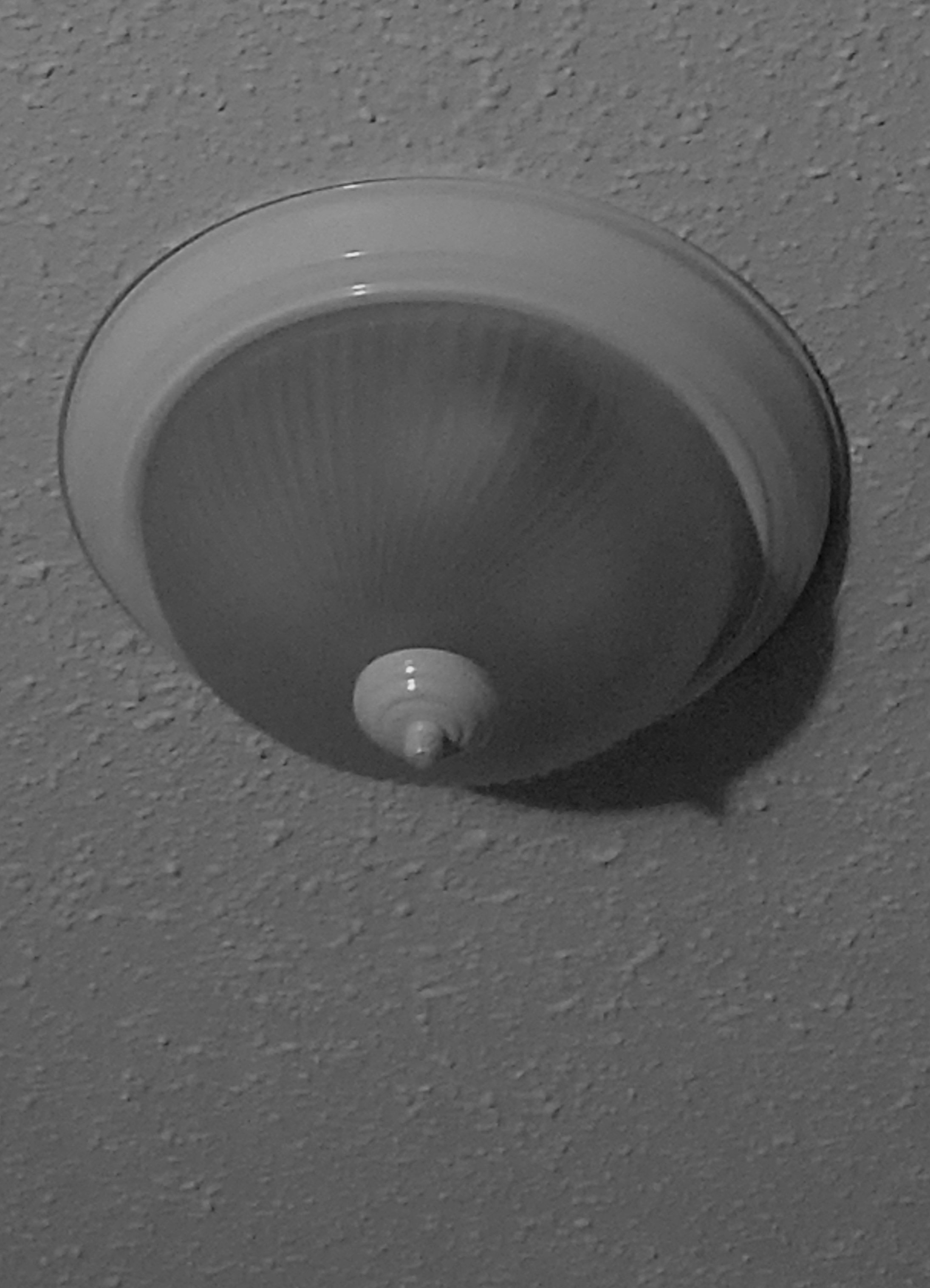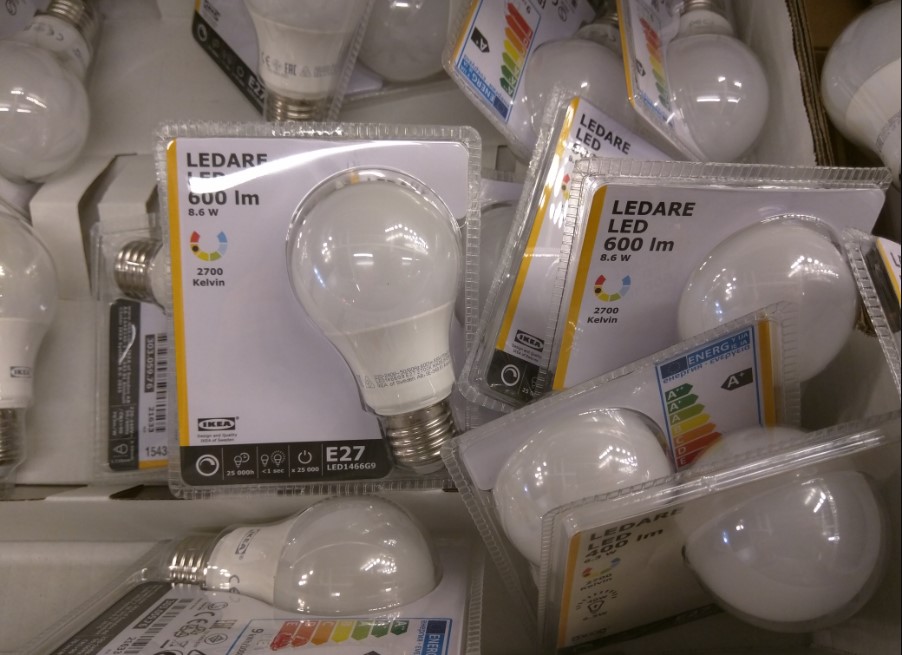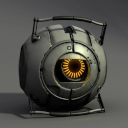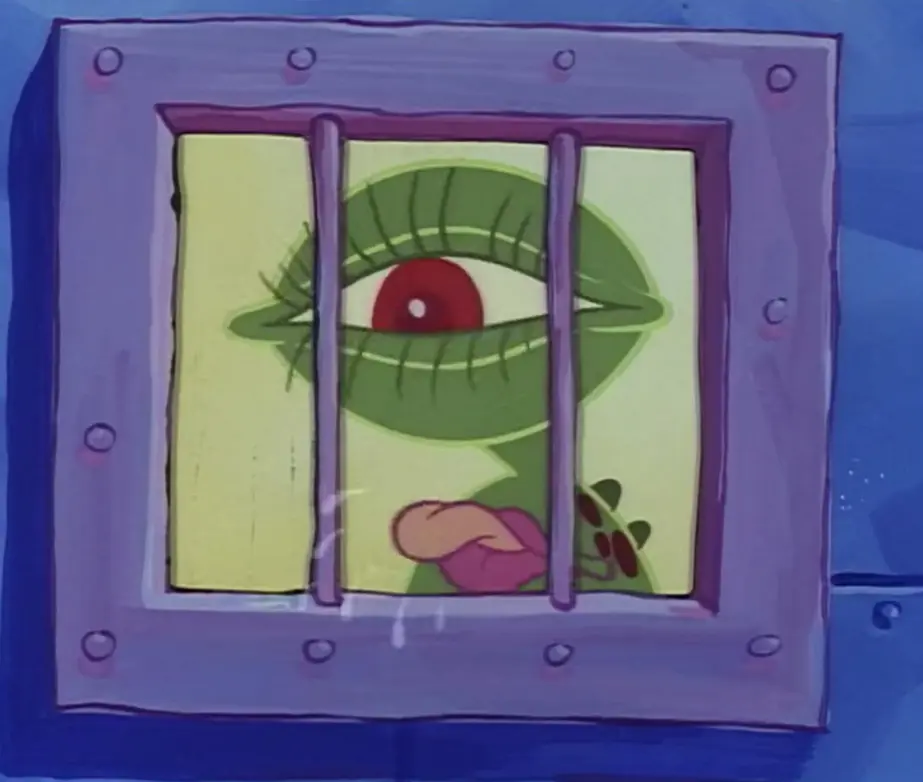- cross-posted to:
- [email protected]
- [email protected]
- [email protected]
- cross-posted to:
- [email protected]
- [email protected]
- [email protected]
Incandescent light bulbs are officially banned in the U.S.::America’s ban on incandescent light bulbs, 16 years in the making, is finally a reality. Well, mostly.
Makes sense. Nonetheless, reminds me of modern washing machines. Yeah they make sense and save water but it stinks that it’s a compromise and it takes twice as long to wash. With Led bulbs it’s always a say a prayer situation to see if a particular bulb works with a particular dimmer and isn’t a flickering mess.
Led bulbs won’t even work with my garage door opener for some reason. I have to use incandescent or halogen bulbs.
Typically that’s only a problem if you buy non-dimmable bulbs. There are LEDs made specifically for dimmer switches.
Disagree. Many allegedly dimmable bulbs still have flicker issues, lifespan issues, and in my experience even some dimmers that claim to work with Led dimmable bulbs have different success rates with different dimmable leds.
The other thing I think worth mentioning is that for non standard bulb shapes and sizes it is difficult to find high quality name brand LED replacements. You end up with low quality Chinese small brands in these cases. I have had higher costs and more difficulty with these types of bulbs than convential incandescent options. I’m not being luddite here, all for the change, but currently it’s not without some sacrifice. I currently don’t believe I own any remaining incandescent bulbs. Outlawing incandescent options seems premature IMO.
I don’t have a strong opinion on dimmers as I don’t have any in my house. I personally feel that cutting electricity to the bulb to control brightness is a bit outdated: I think smart bulbs are the better technology to par with LED (though I concede they’re still pretty expensive.)
Per the article, nonstandard incandescents are still allowed to be manufactured.
electric companies started subsidizing LEDs 10 years ago at box stores. electricity use went down and the bills went up as usual. all the while still burning coal. 🤔 incentives? probably part of the same mandates taxes get spent on
I wish the LEDs weren’t such crap. They don’t even last as long as a 60W incandescent a lot of times. The old CFLs last years, I have a few over ten years old.
We need more systems where we can just replace the power supplies on these bulbs.
I don’t know what kind of crap LED light bulbs you get in the US but here in Europe to to get a CE mark (required to be able to import them into the EU) a model has to have less than 5% failure rate within (if I remember it correctly) the first year, last 10,000h at least (and have been tested for it, which is quite funny because the test requires having the thing always on for months), turn on within a second, lose (due to burn-in) less than a few percent (forgot the number) brightness within the first 6 months and a bunch of other requirements including stuff like color fidelity.
About a decade ago I actually looked into starting a business importing those things from China and still tody have several samples from back then still working fine (and that’s also why I know the CE mark requirements for LED light bulbs).
More in general I’ve been using LED lamps for even longer and even back in the day when they were more expensive those things paid for themselves in lower power costs, and often do so quite fast (a couple of months) when used to replace incandescents, plus the rate of failures is now pretty low.
(When I first replaced all my lightbulbs with LEDs, way back when they weren’t even as efficient as now, the fall in the electricity bill was very noticeable)
Oh, and the price of those things at the factory has been less than $1 for ages, so stores trying to sell those for more than $2 have huge markups and you’re better of avoiding those places and getting them from hardware stores and similar (or just buy online).
I haven’t had a filament LED fail on me yet. The cheapest LEDs you can find aren’t worth it; best to get a name brand.
Name brand like Philips don’t die quickly (mostly) but they lose its brightness pretty fast. I have few 12w MyCare™, it’s going strong for like 3 years but it’s now only as bright as my new 6w LED.
Mostly capacitor plague or heat. I’ve only lost 2 / 50 in Open fixtures with good airflow over the last three years.
I have one outdoor that pops every spring the fixture is damn near sealed and in direct sunlight, but the HOA demands the fixture.
I’ve been running pure led for 10 years. The only failures I’ve had were in heat prone fixtures not designed for leds
This hasn’t been my experience at all, I replaced most of the bulbs in my house with LEDs a couple years ago and I don’t think I’ve had to replace a single one since. When they were all incandescent, I was regularly replacing burned out bulbs. Check which brand you’re buying, you’re probably buying crap which is why you’re getting crap. I’ve found Phillips bulbs work great and are long lasting, I have some that’ve been in a fixture for 5 years now with no issue
I had CFLs burn out all the time.
My LEDs have all been rock solid. Even the cheap ones.
I’m curious about what fixtures your led light bulbs were in.
Old incandescent lights worked great at high heat levels, so a typical boob light fixture that kept the heat in would be fine for an incandescent. Put an LED light in there, and it can still heat up beyond design capacity and might not get enough ventilation and age prematurely.
The only leds that failed for me were inside a fixture meant for incandescent lights. All our open bulbs or specially designed for led fixtures have been going strong for half a decade or more.
Planned obsolescence is a thing here. The LEDs don’t fail, it’s the power circuitry. Unfortunately the fixture theory doesn’t pan out, as fixtures meant for incandescent bulbs need to be able to dissipate much more heat (about 6 times as much). I’ve been using LED bulbs for 7 years in all sorts of different fixtures and have never had even one burn out on me. Why? I don’t really know. Maybe I turn the lights on less often than other people?
It’s more likely that the cheap ones are just using a driver board so cheap that it cannot tolerate the heat at all to cut costs, and the bulb dying sooner is just a nice side effect of that.
It’s best to just not buy the cheapest bulbs. I’ve had good luck with Philips.
I have a 10+ year old LED bulb of corn type, made by a local manufacturer. Works great to this day. It outlived a few generations of store-bought crap like Philips and Emos in the rest of the house.
My apartment has one of those light fixtures in the living room and it uses a dimmer dial. I once tried to replace the incandescent bulbs with what seemed to be the LED equivalent that could be used with a dimmer, but it just didn’t work right. Lots of flickering. I hope this will convince my landlord to replace the fixture so I can finish changing everything to LED.
There are different types of dimmers to work with different types of bulbs. You may get better results with a summer rated for LEDs
For dimmers, you either need smart bulbs that do it themselves or a dimmer switch that you know is guaranteed to work with that bulb, it’s tricky. Also, LED lights that get warmer (change colour tone to a more orange colour) as they dim are far more pleasing than just dimming since they emulate what incandescent bulbs do. Sometimes if the power supply to your unit or building is choppy leds are the first to show it, so hope it’s not that.
Good luck with your landlord, let’s hope they’re a good one.
Thanks for the advice!
Stoned me read boob light and was like, ‘oh ya’. But I gotta make sure, we mean like

(image of a dome light cover with a protruding “nipple” at it’s highest point-- making it breast-like in appearance.)
can confirm, these are boob lights. even my wife uses the term. ripped every one out shortly after we moved in.
Exactly 😆
I can’t think of another term for them.
Getting rid of them made our place look a lot less like 1997
I’ve been in the industry for over a decade and I find it fascinating how much lighting has changed in that time. When LEDs were first available, they were $60+ per bulb. Now you can get multipacks for under $10. Also, CFL bulbs were almost universally hated by everyone (and for good reason) now we no longer sell them. We strictly sell LEDs for regular lighting and we still sell incandescent specialty bulbs. Also, when LEDs first arrived there was a lot of distain for them, especially by the elderly. They wanted their energy wasting incandescent bulbs dammit! It seems the majority of them have come around because they’ve learned that LEDs are better.
I think the main issue with initial Led bulbs was their color was wrong. Incandescent bulbs emit light at 2700K, a nice warm white. Early LEDs emitted light at more like 5000K or there abouts, which is a really white light. Same with CFLs. Elderly people didn’t like that at all. Honestly it wasn’t just them, lots of people hated them for their too white of light.
Today you can get LEDs that are 2700K and/or are adjustable to what ever color you want.
Any recommendations? I’ve struggle with LED light color temp off and on over the years. I haven’t looked into it in a while though. It always seems like if you want a low color temp it has to be an edison bulb which is really dim.
On a separate note I’ve also had reliability issues with LED bulbs where they will blow out and emit smoke.
Look for colour names like “soft white” or “warm”. The 2700K is a dead give away for the colour you’re looking for.
Also, separate note: check your appliances or fixtures for power spikes. cheaper LEDs are notoriously sensitive to voltage fluctuations
how would you check for that exactly?
Look closely at packaging. If you’re in North America, Phillips is the most common for bulbs. They have packages marked 2700K, 5000K, and 6500K.
The colours are as follows: 2700- soft white (yellow hue), 5000- bright white (white hue, almost no colour), and 6500- day light (blue-ish hue, similar to fluorescent).
If you end up not being able to distinguish… ask an employee and they should be able to help
i meant checking for power spikes lol
Lol im dumb… forgot it was a 2 pt question.
Cheap way is to buy a surge protector/ power strip with surge protector.
Plug in appliances/lights that burn out faster than others. Periodically check surge protector to see if the internal breaker has been tripped.
Fancy way is to buy a multimeter and monitor voltage when large appliances turn on/off. That’s usually the most likely culprit for voltage spikes (as your home grid has to compensate for sudden increase in usage, which in turn causes voltage to fluctuate slightly)
Now you can go into pretty much any thrift store and get a whole box of them for like $5-10.
That, but also change happens one funeral at a time.
Is there a brand that’s better for LED? I get migraines and the stroking effect of LED bulbs can be a trigger.
LED christmas bulbs particularly bad. It felt like walking into a rave at the Christmas store.
Yeah, many of those christmas lights use pulse width modulation to control brightness and it is very noticeable. I hope that gets changed over for an analog voltage dimmer soon.
Also, cheap ones run directly on AC, so they flicker at 60 Hz (50 in Europe) because the current is only flowing for half the cycle.
How do high-end home LEDs get around this? Do they have a battery that caches the current between cycles?
When my wife and I bought our place, we renovated and made all lights LED. The overheads in the living room and kitchen are quite bright and steady, so they must avoid this somehow.
A bridge rectifier flips the negative current to positive, so instead of a sine wave you get a series of humps. Then a capacitor acts as a battery like you describe to smooth out the dip between humps.
Ok, I get the gist. Thanks!
There are half wave rectifiers and full wave rectifiers. The former only converts the positive AC to DC and shuts off for the negative half (causing flickering). The latter will convert both positive and negative halves to DC and don’t flicker.
Well, LED lights are half-wave rectifiers that light up, so you wouldn’t add one. I don’t think I’ve ever heard of a half wave rectifier referred to as a bridge rectifier.
FULL BRIDGE RECTIFIER!!!11
Regular brand LED bulbs don’t strobe at all, only the very cheap ones from AliExpress and the resellers of Chinese crapware (like Walmart) do. IKEA has some nice and cheap bulbs, for example.
I wonder if multi-element bulbs offset the phase of each element so the flickering cancels out.
I’ve never been disappointed with Philips. However, I have no doubt there are tons of exceptionally good quality products out there from various brands.
I honestly couldn’t tell you. Its been so long since I purchased LEDs and the ones I bought were from the company I work for. They have worked well for me but I don’t know if any brand is better than another.
There are LEDs with CCD power converter. I got one 10 years ago and tested it with a 240 fps camera, no flicker at all. I will not recommend a brand because it’s been years,but search for “ccd led bulb”.
Also there’s a number called CRI, indicating how well it represents colors. This also may contribute to your headaches. 85 or higher is good, 90 is great. Just don’t trust these numbers on Amazon, the cheapest of cheap crap is marketed as " cri 90+" there.
Or scratch what I just said and find a small store that specializes in lighting and ask the clerk (or email them).
The most amazing thing to me - I’ve been using leds for 10+ years, and I think I’ve had to replace one or two of them. It is a wonder that prices can come down with demand dwindling so much.
I had to replace an LED bulb a few months ago and I remember being annoyed because they did only lasted five years.
Man, I remember as a kid we had a box of bulbs for when inevitably one burnt out each month or so. Now, I have a drawer with a bunch of led bulbs I’ll never use because they don’t burn out!
Seriously, I have whichever ones were remaining in the boxes when we finished populating all our fixtures. Haven’t replaced one ever.
As energy and maintenance go down, the popularity of lighting goes up—so maybe the decrease in sales of replacement bulbs has been offset by an increase in the total number of bulbs in use.
I remember when I was a kid, it seemed like we had to change the light bulbs every other month. Now I’m annoyed because these things last so long I don’t keep any spares and I have to leave my house to buy one when it expires!
I can’t remember ever having to replace a dead LED bulb. And only a few CFLs. But I remember replacing incandescents all the time when I was a kid.
In my old apartment I lived in for 6 years I must have had a faulty kitchen light that did something to the bulbs because I changed LEDs in that like more than once a year, but none of the other lights I changed. Granted I also turned on that light way more than the overhead bedroom light so idk. But I definitely killed quite a few LEDs.
Pretty much the worst wear and tear on most electronics comes from power cycling.
Yeah that occurred to me like in the middle of the thought process and I just rolled with it. 😅 That apartment kitchen was so dark I turned the lights on a lot.
This… Doesn’t seem right? Dimmable LEDs are switched hundreds of times a second as would the resistors and other components in series with them. Computers turn on and off transistors (mosfets) millions of times per second. Dude flipping a switch a few times isn’t close to that.
Heat is the worst enemy of most electronics. Many LEDs are put in places where heat is not dissipated well which can shorten life span.
Excessive heat perhaps, and yeah, bulbs with bad thermal design, or bulbs installed in tight enclosures do die a lot faster.
It’s also temperature changes that cause problems. A current that flickers 50-60 times a second is not going to fluctuate it’s temperature. Turn it on or off every 10 minutes and the components will shrink or expand each time, and the components will eventually start to fail.
My LED burn outs were almost certainly defective, not normal wear.
Had my current place for four years now, one of my first tasks was to replace all the bulbs with LEDs. Exactly two have burnt out; amusingly, neither were among the most heavily used bulbs; one I suspect took water damage, since it was in the bathroom.
This is why I don’t support overreach in regulation.
Put a tax on it or something, but a full ban seems excessive. Now that most people understand that LEDs are superior, they are cheaper, and there are more options, most people will make the switch.
No really. A lot of people, even when shown proof, out of simple spite just double down on their position.
When energy saving and early LED bulbs started to be deployed in my country, while the fade out of incandescent bulbs was put in place, we had runs for buying every single incandescent bulb available. The change was not welcome. Even if changing meant real, objective, tangible savings.
People would put in large orders for bulbs, arguing they wanted to “have proper lighting as long has they lived”. Luckily, the stocks quickly ran out and some distributors simply refused to pass the stocks to the market.
A government cutting off a product is not overreach: it’s forcing change that otherwise would not happen, for the better.
A lot of people, even when shown proof, out of simple spite just double down on their position.
But is it enough to really matter? Especially after the market for incandescent shrivels?
I’m sorry, I’m not following your reasoning. Can you elaborate, please?
People will bitch about the one guy buying all the incandescent bulbs but ignore the fact that everyone else isn’t.
1 old dude isn’t enough to make a difference.
This wasn’t one or two isolated cases: it was a race to the stores.
I was a kid then and my grandparents got caught in the wave and bought more lamps that they required to light the entire house. Which later proved to be of bad quality and aided me in making their transition to energy saving bulbs.
People would line up in front of stores to get the precious, precious bulbs, making the exact same sort of conversation and observations we can read throughout this thread, criticizing government and politics in general.
The store owners would chime in and add fuel to the fire, stating a lot of people would lose their jobs, as the factories would close (cute fact: there was precisely zero factories for those products in the entire country).
People are stubborn and will not change ways unless no other option is available and even then grudgingly, while companies only shift practices if forced, be it by force of law or by cash flow and profit goals.
Governments enforcing positive laws and regulations, even if unpopular, are necessary measures to move things forward in a modern society.
Most people willingly migrated to LEDs when the circumstances shifted in their favor. There was absolutely no law required. The fact that most people are using LEDs before this was even enforced kinda proves my point. The number of holdouts is small enough to be ignored.
No really. A lot of people, even when shown proof, out of simple spite just double down on their position.
When energy saving and early LED bulbs started to be deployed in my country, while the fade out of incandescent bulbs was put in place, we had runs for buying every single incandescent bulb available. The change was not welcome. Even if changing meant real, objective, tangible savings.
People would put in large orders for bulbs, arguing they wanted to “have proper lighting as long has they lived”. Luckily, the stocks quickly ran out and some distributors simply refused to pass the stocks to the market.
A government cutting off a product is not overreach: it’s forcing change that otherwise would not happen, for the better.
Also it became a political issue as all things should be somehow
Yes. Many of the people that objected also wore MAGA hats. I think the whole idea was that it was better for the environment and you know what that means.
I specifically remember trump saying something about bringing back yellow light 😮💨
Yellow street lights are actually very good.
For sure, but if an entire city switches over to LED, that is a lot of electricity saved. Imagine the impact an entire country would have.
No. High pressure sodium lights produce more light for the same wattage. HPS produces 80-140 lumens per watt, LED produces 30-90 (https://ledlightinginfo.com/why-are-street-lights-yellow-and-not-white). They also tend to run slightly warmer which means they are less likely to be covered by snow. That’s why Europe is still using them everywhere.
I’ve heard the LEDs offer much less light pollution, but perhaps that is not unique to technology difference and just the difference in lumens?
Also, I’m surprised there aren’t equal lumen led lights.
It seems the majority of them have come around because they’ve
learned that LEDs are better.died
they died
I’m sure some of them have
Why not CFLs? I was just thinking the other day about how they vanished.
The 3 biggest issues CFLs had were their warm up time, especially in cold weather, the flicker some people are sensitive too, and they contain murcury as all florescent bulbs do. That means it is absolutely necessary to properly dispose of them so mercury doesn’t get into the ground water.
One problem is that CFL bulbs is that they contain small amounts of mercury (about 4mg per bulb). Because of that, disposing of them responsibly requires going through big hassles rather than just throwing them in the trash. Also, because of that mercury, accidentally breaking one means contamination of the environment around the break.
Flickering - always was a big problem for these things.
Longevity: They were very sensitive to heat, which meant that they loved to burn themselves up in a lot of applications.
Dimming: CFLs were NEVER good at being dimmable.
CFL was just a very poor technology detour on the way to the vastly superior LED lights.
CFLs aren’t good at dimming because they are not dimmable. Trash light bulb tech, don’t get me wrong, but you cannot even dim them to begin with. I’ve tried dimming them back when I didn’t know any better and had one of the fuckers literally explode in front of my very eyes.
Some were produced that were claimed to be dimmable - and I wasted my money on a few and was still unhappy with them. The other problem I forgot to mention earlier was the startup time: the earlier bulbs (and the cheaper ones) wouldn’t just ‘turn on’ when the power was turned on…they took some time to start making light, and the colder it was the longer it took - this is an aspect where LEDs are amazing - maximum brightness within milliseconds of getting energized.
Let’s be real here, people have switched to LEDs a long time before this ban happened. But that’s a good thing, and kind of the whole point of the timeline of this ban.
You want the market to decide on its own that LEDs are superior and then give it time to slowly switch over. Setting a ban and then forcing people to switch in 3 months to some new lighting technology is only going to build resentment from certain groups. Setting a ban that is 5, 10, 15 years out is the smart way of doing it. The thinking is that by then, the superior product will have already taken over the older tech and people won’t be up-in-arms over the big bag gob’ment telling them what to do.
Every chunk of positive social progress has “built resentment from certain groups.” Those people eventually either get over themselves and join modern society in doing the thing properly, or die mad. The rest of us are fine either way.
how long until there’s a right wing black market for incandescent bulbs like gas stoves prob…
My right wing dad already stocked up
“F*ck efficiency!”
Actually very on brand. hmm…
Wondering if incandescents can still be sold as heat bulbs because that’s what they are
We call them “space heaters”…
Yes they can. Also your fridge and oven will still have incandescent bulbs because more efficient lights aren’t great at operating in extreme temperatures.
manufacturers can still build and stores can continue selling:
Appliance lamps, including fridge and oven lights Black lights Bug lamps Colored lamps Infrared lamps Left-handed thread lamps Plant lights Floodlights Reflector lamps Showcase lamps Traffic signals Some other specialty lights, including marine lamps and some odd-sized bulbsWe have an LED light bar in our deep freezer and also our mini fridge. LEDs seem to work absolutely fine in the cold actually.
Yeah, LEDs are pretty ideal in the cold as long as they’re properly sealed from humidity. They don’t heat up your fridge extra every time you open the door. Oven lights definitely wouldn’t work unless you want a nice plastic glaze on top of the cake you’re baking.
You are correct about everything but I feel I should point out that the amount of heat produced by an incandescent bulb in your fridge is miniscule compared to the heat energy of the warm air that enters your fridge as soon as you open the door. Cold air sinks due to its density and so when you open the door it all falls out and your fridge must work it’s ass off to cool all the new air back down to the set temperature. The heat added by an incandescent bulb for a few seconds is basically irrelevant.
This is also why chest freezers are so tremendously efficient. When you open the lid, the cold air stays inside. Very little mixing occurs with the rest of the environment.
Yeah, it’s not a lot of heat, but it starts making a bigger difference once you’ve got the fridge packed full of stuff (less air loss, also makes it take longer to find stuff, so the light stays on longer). I’ve had items at the back near the bulb get extra freezer burned because of the constant heating/cooling. That was quite an old fridge/freezer though, so not the most efficient to start with, and the temperature control could have been better.
I do love chest freezers. They’re way more efficient and I find a lot easier to organize too. There’s some fridge/freezer combos that have a freezer drawer, but I’ve yet to find one that’s fully enclosed so all the cold air stays in. Most I’ve seen have wire baskets or something for the drawer… Having space for a separate chest freezer is not a luxury everyone has.
can we ban standard time and permanently switch to DST now too?
i thought we did?
oh fuck me we didn’t
Senate passed the bill by unanimous consent, although several senators stated later that they would have objected if they had known that the bill could pass. No iteration of the bill has passed the House.
WTF? Why the heck would those people have wanted it to fail and why would they vote for it if they did?
And since it got unanimous consent in the Senate, why the heck didn’t it go to the house? It’s the rare case of a bill that I think everyone likes.
To appease voters
Tell me your government is fundamentally broken without telling me…
Ha, do you live in Arizona?
DST is the best thing ever. Who doesn’t want more daylight after work?
Oh yay it’s bright at 4am in the morning when I’m asleep.
Just pick a time and stick with it
What about 4am in the evening?
Why are Republicans mad about it?!
Something about limiting consumer choice, but everyone purchased LED bulbs to begin with anyways…
When are they aren’t mad? LOL they can die mad for all I care.
Tradition
Because imagining that someone might have a legitimate reason to want a product or service that a regulator might not have thought of is currently a “Republican” trait in the US.
Because they were born.
because they think we should be burning whale oil
I wonder if this will have any effect on the film industry…
I had always used incandescent bulbs in practicals but now there are LED bulbs made specifically for film sets. Household LED bulbs are usually a mess on camera with ugly color spikes and/or flickering.
I’ve been lighting almost exclusively with LED these days aside from some HMI’s, but even those are starting to get LED competition, at least for smaller ones.
Thanks for your response! If you light events with broadcast cameras, I am the annoying video engineer behind the camera controls asking about flicker and color balance. I hope they keep making y’all’s specialty bulbs. Looks like there’s a big list of exceptions!
Look at the Power Factor (PF) and Colot Reproduction Index (CRI) of the LED light bulb.
If the former is something like 50% then it means it has a cheap power rectifier inside (little more than a bunch of diodes) which doesn’t at all filter the power fluctuating nature of AC (basically all it does is make the negative side of the sinusoidal wave that’s AC become positve and leaves the whole voltage variance from 0 to max and back untouched) hence the flickering.
The latter quite literally tells you how good the colors look under that lighting. You want at least 90%, with more being better.
Mind you, nowadays CRI is usually not a problem, but the whole cheap power rectification inside the bulb generally is (because a basic power rectifier can cut 10% or more of the manufacturing price of a lightbulb).
Cri is a common specification I see, even if I suspect lots of lying. Where do you find PF information? I don’t remember ever seeing it on any bulb packaging before.
Yeah, that’s the problem: PF is not mandatory to be in the packaging so it’s not usually there.
If you buy online, sometimes you can find it in the product information section.
I’ve noticed that the “usual chinese sellers” will mention it if it’s good (say, 80%) but not when it’s the cheap-converter one (50%).
Alternativelly when looking for the bulbs not likely to flicker you might also look for the “dimmable” ones, as the abiloty for a light lamp to support an external dimmer requirex a better power converter inside the bulb.
I would think they’ll be mostly over to LED by now.
deleted by creator
Wrap it up boys, we’ve solved climate change.
The EU introduced a limitation to how much power electric devices can consume in off or standby mode.
0.5 watt normally, 1 watt if they have a status display and 2-8 watts if they’re connected to a network.
On a yearly basis this saves as much electricity as one of the member states (Romania) used in a year.
My point is that small things add up to huge numbers.
LED bulbs aren’t really even a small thing.
going from a 100W bulb to a 15W bulb, or a 60W bulb to a 2.5W bulb (that’s the actual conversion for the bulbs i’ve actually bought on amazon and am currently using, not hypothetical guesses) across 20-30 bulbs in a single house is a real actual big difference in energy savings.
Exactly. From this particular article/policy:
Similarly, it projects that the rules could cut carbon emissions by 222 million metric tons over the next 30 years.
Now instead of throwing out a little glass and wire, I get to throw out entire light fixtures with non-replacable LEDs soldered onto cheap PCBs that fail in about the same time as an incandescent light bulb!
I’m all for the energy efficiency of LEDs, but the cheap light fixtures replacing bulbs are a bad trend that needs to die, but they’re easier to wire and last longer on paper, so they’re getting installed everywhere by default.
This has everything to do with implementation and complications from late-stage capitalism and not the actual technology
So don’t buy non-replaceable fixtures?
How is removing incandescent bulbs from the marketplace going to increase the installation of fixtures with non-replaceable components, when such fixtures never used incandescent bulbs in the first place?
It can be difficult. I started asking around about getting recessed lighting installed in my kitchen and they all wanted to install disk lights.
These seem even worse since not only do you have to replace the fixture when it burns out, but you risk having to replace all the fixtures when it varies by color temperature or trim
They should charge you less for using cheaper material, reduce labor costs etc and charge the regular rate (like they fucking die before) to install a recessed fixture.
Overall, capitalism and rampant, irresponsible consumerism is to blame for all these quick fix solutions and lack of repairable devices. There is not one person to blame but ourselves for continuing to buy into this bs (literally)
Im going to replace a two year old light because of this non replaceable light crap.
For what it’s worth I’ve had one of those integrated overhead fixtures in my kitchen for about 6 years. It hasn’t failed yet. The overall shape of the fixture which we like also wouldn’t be possible if the bulbs were replaceable.
Your sample size of one is useless
Well actually I’ve got one in my laundry room too and that one hasn’t failed either so it’s really a sample size of two. But either way if you don’t like it that’s why I said for what it’s worth.
Still useless
OK, and? LEDs typically last way longer than 6 years, but it’s still going to be a pain to replace when it does fail.
They’re not all bad, there are many bad ones though and the light bulb form factor is better for repairability (but there are bad LED bulbs too).
The light fixture in my apartment started flickering and not turning on all the way, and it was only a few years old (On a dimmer switch, the dimmer-compatible driver in the fixture died). I couldn’t even fix it myself because it’s hardwired and my landlord wouldn’t be happy with me playing electrician. So I was stuck with no light in that room for weeks until the landlord got it replaced.
Not to mention I couldn’t change the color temperature to match the rest of my lights, which drove me nuts.
Is your point we should not be taking steps to decrease electricity usage because this step by itself doesn’t fix the entire problem?
It’s just a joke, we need to do much more
People will complain about climate change than complain about LITERALLY EVERY SINGLE ATTEMPT to improve it. Isnt this what people are always saying needs to happen?? That individual action isnt the way but we need legislature to fix everything? What did people think would happen if governments try to fight climate change? That our lives would in no way shape or form be affected?
The answer is everyone else has to fix climate change. Everyone but me
When you have billionares shooting off joy ride rocket ships to space putting out more pollutants than 1000 regular people do in a lifetime per trip, yeah, my recycling everything and switching to oat milk is a pretty futile effort. Individual actions are fine, but there are some things that need the force of law to make a difference.
This line of discussion needs hard numbers.
https://ideas.ted.com/environmental-impact-carbon-emissions-of-space-tourism/
https://gizmodo.com/jeff-bezos-space-joyride-emitted-a-lifetime-s-worth-of-1848196182
Like many things there is a lot of back and forth depending on what numbers you throw into the calculation. Raw carbon from the rocket fuel may be low, but taking in indirect sources raises the totals dramatically. I prefer to look ilat the totality of things since things like flying private jets to the launch site wouldn’t happen if there where no launch to attend.
75 to 1000 tons of CO2?
That’s, what, 5-62 years of an average American lifestyle?
Honestly, that’s not so bad lol
Well, sure, space tourism emissions are gonna be relatively enormous compared to other forms of travel, but I was thinking of stuff like that, versus typical individual emissions, emissions by industry, etc., as % of total global emissions.
Agreed, both are completely required.
You’re only one person, you don’t have to take full responsibility for all of climate change. But you can take responsibility for your slice of climate change
The U.S. is pretty late with this, compared to the European Union. Only a few special bulbs are still sold here. Apart from that, the only allowed lighting technology is LED.
Tell that to the bar I was at last night in Palermo. They had a string of festoon lights going down the laneway and every one of them was incandescent. I noticed the same in Taormina. In fact, Italy seems pretty far behind the rest of the EU when it comes to environmental concerns…but that’s for another thread.
They are not sold anymore, but whatever is left and working can still be used. Many people also bought a ton of incandescents before the selling stopped (tHe lIgHt is sO mUcH bEtTeR!!!)
tHe lIgHt is sO mUcH bEtTeR!!!)
narrator voice: “but it was not”
It generally is though. The look of incandescent and halogen is only rivaled by high end LEDs.
nah. in my experience, even cheaper LED bulbs from discounters can nicely replace old bulbs.
It’s true that what “el-cheapo product” once was done by simply reducing lifetime is currently done with looks.
It can be. Cheap LED lights with low quality AC rectifiers are awful. If those are your point of comparison then yes, incandescent light is better (more steady).
Of course that difference goes away if you just get a better LED light.
Some also have terrible CRI. Nothing like giving everything a subtle green or purple tint.
yeah, i was referring to current tech. First LED or those mercury vapor bulbs were basically useless.
You can definitely get “current” LED bulbs with bad hardware inside still today. See: Everything made by NOMA.
You could also get ultra cheap crappy incendescant bulbs in the past.
deleted by creator
Even the “cheap” LED bulbs are still many times more expensive than incandescent, and incandescent will give much better light than poor quality LED.
The LED bulbs have a higher up front cost, but ive not come across a single instance where an incandescent was cheaper when factoring electricity costs.
Specialty lights are still being sold. Plenty of British pubs have special incandescent lights. They are usually quite dim.
Maybe they still run on “new old stock” bulbs until they are used up. But even if they do, they clearly didn’t do the math. I’ve upgraded all my lighting to LED and binned all my incandescent stock.
I’m sitting inside a house where, presently, all lights turned on at the same time will require 30w. Before we went through all the lights, a single lightbulb would use 45w.
Just by replacing the old light bulbs, we reduced energy consumption and the number of lights required to light a room.
Are you sure they were incandescent bulbs and not just LED bulbs copying the incandescent style? They make a lot of decorative LED bulbs now with straight sections of LEDs to imitate the glowing wire of an incandescent.
Definitely. I’m an electrician, so my eyes are usually drawn to these type of things. Light fittings, outlets, switches, etc.
Are you talking about an Edison bulb?
This is one example of the LED bulbs I was describing, but there’s plenty of different styles of these being made
Having grown up in the era of incandescent bulbs I remember the fancy white bulbs made with frosted glass being more expensive than the totally transparent ones you could see the glowing filament inside, because the filament was irritating to look at and the frosted ones smoothed out the light for you.
I’m very amused that we’re now jumping through hoops to make skinny LEDs that can fake the look of the old filaments nobody wanted to look at back then, and those are now the fancy expensive ones.
I think to update the string of lights you’d need to change transformer. Household bulbs have a driver in the bulb that converts the 230V to the ~12V the bulb uses. But for that string of lights, they’d need to get an electrician (or someone who knows what they’re doing)
While you may need to replace the whole strand, and can’t just swap in individual bulbs, the strand itself has the resistors needed to let the LEDs function, instead of the individual bulbs.
This applies to all the things, unfortunately. It must be nice to have a functional union. Even though I’m sure it’s not perfect, progress is made at a decent pace. Our country is hijacked by a cruel/angry/illiterate cult every 1-2 elections, it’s not ideal.
ban isn’t needed or good
Found the fuck who thinks others will blindly believe statements made by random strangers on the internet with 0 credible sources or proof just like they do lmfao
I’m not sure what you’re trying to say here, I just think that if the technology is good enough, people will adopt it anyway so it’s not needed, and bans can be bad like idk if you support banning drugs but it can create unintended harms (maybe there is a legit use for the old bulbs in some places, and by no means have people used up the supply we already have)
These aren’t really sound points, although they’re logical on paper.
This is namely because you’re over simplifying matters. People don’t just adopt things because they’re “good”
Look at Betamax, that shit was definitely better than DVD technically but people still bought in. As much as I’d love to believe in simple, traditional economic ideals - they’re just sugar water and it’s sure to cause vision problems if you continue to consume it so recklessly
True, but most of the US already did buy into LEDs.
LEDS are not the the problem, it’s the soldering them that inconveniences most people.
There’s plenty of startups that are pushing for more modular (think Lego brick) technologies to help us be more sustainable and replaceable in the digital age
It’s the same reason lightbulbs aren’t hard wired to the house and are instead fastened


























